Since 2020, we’ve witnessed unprecedented changes in numerous areas. Industries are quickly being changed by artificial intelligence, global connections are growing swiftly, and technology is becoming more and more a part of every part of our lives. In this ever-changing world, using out-of-date leading methods to run modern, global businesses is not enough.
To succeed in this new century, organizations require a transformative leadership approach that embraces change, promotes innovation, and enables individuals to realize their full potential. This is where The Un-Leadership is relevant.

The Old vs. The New: A Leadership Paradigm Shift:
Conventional leadership often relied on hierarchical frameworks, unilateral communication, and a methodology of command and control. This approach was formerly effective, but it cannot meet contemporary requirements.
Conversely, The Un-Leadership advocates for a more collaborative, democratic, and people-centric methodology, distinct from previous leadership paradigms. It underscores:
Collaborative decision-making: Leaders engage their teams in the decision-making process, encouraging an ownership attitude and promoting varied viewpoints.
Transparent communication: Leaders foster a culture of openness, facilitating the free exchange of information and actively promoting feedback.
Emotional intelligence: Leaders recognize and regulate their emotions as well as those of their team members, promoting trust and collaboration.
Continuous growth: Leaders emphasize personal development alongside team growth, acknowledging that ongoing learning is vital for success in an ever-evolving environment.
Practical Measures for Executing The Un-Leadership:
Transitioning to the next era of leadership, termed The Un-Leadership, necessitates a methodical and organized strategy. Below is a roadmap to facilitate your implementation:
Adopt the ideals of Un-Leadership: Acquaint yourself with the fundamental tenets of The Un-Leadership, including inclusivity, accountability, and cooperation. Examine The Un-Leadership Framework and comprehend its essential elements.
Evaluate your existing leadership approach: Assess your existing leadership methodology and pinpoint opportunities for the incorporation of The Un-Leadership.
Formulate a strategic roadmap for transformation: Design a plan for the progressive incorporation of The Un-Leadership into your organization, first with small, incremental modifications. Concentrate on one or two principles simultaneously, and cultivate momentum as you go.
Articulate the vision: Articulate the vision for The Un-Leadership Framework to your team, elucidating its advantages and the implications for their responsibilities. Foster transparent communication and resolve any issues.
Facilitate training and growth: Invest in leadership development initiatives that correspond with The Un-Leadership ideals. Provide training, coaching, and mentorship opportunities to facilitate your team’s development.
Enable your team: Assign power, promote independence, and facilitate collaborative decision-making chances. Cultivate an environment of trust and cooperation.
Facilitate transparent communication: Create explicit communication pathways, invite input, and endorse openness in decision-making procedures.
Promote perpetual learning: Urge your team to adopt ongoing education and advancement. Facilitate access to resources, training, and developmental opportunities.
Exemplify leadership: Exemplify the UN leadership values in your conduct and engagements. Exhibit inclusivity, responsibility, and collaboration in your daily conduct.
Assess and evaluate progress: Consistently analyze the influence of The Un-Leadership on your organization. Monitor essential indicators, collect feedback, and implement modifications as necessary.

Although the advantages of UN leadership are evident, the execution of this novel strategy may pose considerable difficulties:
A significant obstacle is overcoming the resistance to change among individuals and organizations. Numerous individuals are accustomed to conventional leadership frameworks and may be reluctant to adopt alternative methodologies.
This reluctance may arise from fear of the unknown, a perceived loss of control, or a mere lack of comprehension regarding the advantages of contemporary leadership. As a leader, it is imperative to proactively address these issues, articulate the vision clearly, and furnish assistance and resources to assist individuals in adapting to the new methodology.
Cultural Disparities: The Un-Leadership advocates for openness and diversity, presenting challenges in organizations with entrenched cultural norms and biases. Diverse cultures may possess distinct expectations about leadership, communication methodologies, and decision-making procedures.
Contemporary leaders must be attuned to these distinctions and foster an environment in which diverse opinions are esteemed and acknowledged. This may entail questioning established norms, fostering cross-cultural comprehension, and modifying The Un-Leadership concept to align with the cultural context.
Resource Deficiency: The implementation of Un-Leadership may necessitate investment in training, development, and organizational reorganization, posing a challenge for resource-limited enterprises.
Implementing leadership development programs, establishing collaborative workplaces, and adopting new technology necessitate substantial financial and human resources. Leaders must champion essential resources, investigate innovative solutions, and prioritize investments that will significantly influence the promotion of The Un-Leadership principles.
Assessing Impact: Evaluating the concrete effects of The Un-Leadership on organizational performance can be difficult, especially in the short term. Although the long-term advantages of The Un-Leadership are significant, quantifying the immediate impacts on KPIs, including productivity, efficiency, and employee satisfaction, can be difficult. Leaders must set explicit objectives and benchmarks, monitor progress over time, and convey achievements to illustrate the efficacy of leadership.
Preserving Trajectory: Maintaining the Un-Leadership method necessitates continuous dedication and exertion. Preserving momentum amidst competing agendas and difficulties can be arduous.
In the context of organizational transformation, there is sometimes a propensity to revert to previous habits and methodologies. Leaders must continually advocate for the Un-Leadership principles, promote the new behaviors, and cultivate a culture of continuous improvement to guarantee the approach is ingrained in the organization’s DNA.
Overcoming the Challenges:
To surmount these hurdles and effectively execute The Un-Leadership, leaders must embrace a proactive and deliberate methodology:
Convey Information Proficiently: Effective and coherent communication is essential for addressing issues, cultivating support, and enhancing comprehension of the Un-Leadership concepts. Leaders must elucidate the rationale for the shift, delineate the advantages for both individuals and the company, and swiftly rectify any misconceptions or apprehensions.
Establish a Coalition of Support: Involve essential organizational stakeholders and advocates to facilitate the transition process. Identify prominent and fervent individuals regarding The Un-Leadership and enable them to champion the novel strategy. Such efforts can establish a support network that facilitates the surmounting of resistance and expedites adoption.
Allocate Resources and Support: Invest in training, development, and tools to empower individuals with the skills and knowledge necessary to adopt The Un-Leadership. This may entail conducting workshops on emotional intelligence, collaborative decision-making, and conflict resolution. It also entails establishing a nurturing environment in which individuals feel secure to experiment, learn, and develop.
Commend Achievements: Acknowledge and celebrate first successes to generate momentum and illustrate the beneficial effects of The Un-Leadership. It aids in consolidating new behaviors, inspiring individuals, and encouraging an optimistic attitude. Disseminate success narratives, emphasize individual accomplishments, and recognize the team’s collaborative endeavors.
Exhibit Patience and Perseverance: The implementation of Un-Leadership constitutes a journey rather than a final goal. Exhibit patience and perseverance while adjusting your strategy as necessary. Setbacks and hardships are inevitable; nonetheless, maintaining commitment to the mission and pursuing continuous learning and growth are vital. Consistently assess progress, solicit input, and implement modifications to ensure the Un-Leadership method is thoroughly integrated into the organization’s culture. Leaders need to adopt a proactive and strategic approach to their roles.

Concluding Remarks
The Un-Leadership presents an innovative paradigm of leadership crucial for achieving success in the 21st century. By adopting its ideas, firms can foster a more positive and productive work atmosphere, enhance productivity, and establish a future-ready organization.
What is your opinion of The Un-Leadership? Convey your perspectives and experiences in the comments section below!
If you wish to explore the implementation of The Un-Leadership in your organization, please schedule a consultation call with us. We offer experienced direction and support to facilitate the transformation of your leadership approach and the attainment of your corporate objectives.




